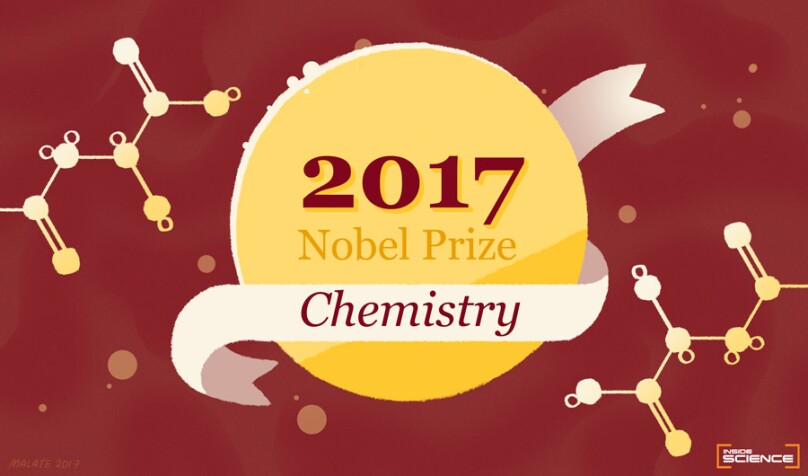Three Share Chemistry Nobel Prize for Developing New Technique to Image the Molecules of Life

Three Share Chemistry Nobel Prize for Developing New Technique to Image the Molecules of Life lead image
Abigail Malate, Staff Illustrator
(Inside Science) -- The 2017 Nobel Prize in chemistry has been awarded to three scientists “for developing cryo-electron microscopy for the high-resolution structure determination of biomolecules in solution.”
The prize goes jointly to Jacques Dubochet of the University of Lausanne in Switzerland, Joachim Frank of Columbia University in New York, and Richard Henderson, of the MRC Laboratory of Molecular Biology in Cambridge, in the U.K.
Cyro-EM, as the technique is called, makes it possible to see the structure of the molecules of life in solution – similar to how they exist in living organisms. It is a powerful tool to help researchers understand how life works on the molecular level.
The award was announced by Goran K. Hansson, secretary general of the Royal Swedish Academy of Sciences. The winners will share a prize of 9.0 million Swedish kronor (about $1.1 million).
More details are available at http://www.nobelprize.org/nobel_prizes/chemistry/
Editor’s Note: Inside Science will provide detailed coverage of the 2017 Nobel Prize in chemistry in a longer article to be issued later today. For all of our coverage of this year’s prizes, go to https://www.insidescience.org/nobel-coverage/2017
For our coverage of other Nobel Prizes from recent years, please click here

